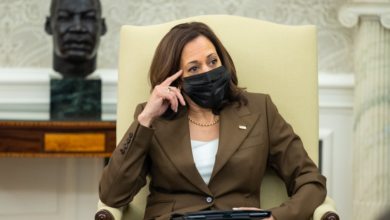Education Savings Accounts Can Do for Education What Netflix Did for TV
My dad remembers when his family got their first television. It was black and white, and there were only three channels available. But they were thrilled to be able to watch shows right in their own home. He never dreamed one day he’d have a device in his pocket that could play any show at any time in full color.
In my dad’s lifetime—and even in my own—television has been completely transformed. The move from black and white to color amazed families starting in the 1950s. The spread of cable TV meant families had access to dozens, if not hundreds, of channels. Digital technology let people record shows so they could play them at their convenience. And then streaming made it possible to watch shows on demand from nearly any location.
At each step, a combination of technological challenges and government regulations had to be overcome to bring us to where we are today.
We can see similarities between advances in television and the education landscape in America.
In the mid-1800s, many policymakers decided states needed to get involved in education. Faced with the transportation and communication limitations of the time, states went with a geographical division—students were assigned to schools based on where they lived.
The world is a very different place than it was in the 1800s. We now have cars, phones, computers, and the internet. There’s no longer any justification for assigning children to schools based on where they live instead of their needs. Yet so-called progressives inexplicably balk at progressing beyond ZIP-code assigned schools to a model that lets funding follow students to educational environments that work for them.
Early calls for education choice focused on vouchers and charter schools. These were great advances compared to the government monopoly that restricted students to assigned district schools. With vouchers, families could choose a private school that aligned with their values or followed their preferred styles, like classical, Montessori, or unschooling. Charter schools give families options within the tuition-free public school sector.
These changes—like the advent of color TV or cable TV—were steps towards the eventual move to a modern education model that prioritizes students. Education savings accounts, which allow education funding to follow students to a diverse array of educational options, are a giant leap forward. They’re doing for education what Netflix did for television—allowing individuals to make the choices that work for them.
The ability of children to get an excellent education that meets their needs should be celebrated, not feared. Yet too often—especially among self-proclaimed progressives—the response to these educational innovations is fear. Giving kids options, they claim, will be the “death knell” of public schools. The logical implication of this argument is that parents should sacrifice their children’s well-being to prop up a school that isn’t serving their needs. It’s unconscionable. It’s certainly not a step toward progress.
The people who sold black and white TVs probably feared competition from color TVs. Broadcast networks feared competition from cable channels. Cable companies currently fear competition from streaming services. But society doesn’t let providers’ fear block progress.
Similarly, we shouldn’t let fear from teachers’ unions, school board associations, and other entrenched interests block progress in the education realm.
No school can meet the needs of every child who happens to live near it. That’s why we need to let funding follow students through programs like education savings accounts. Just like my dad couldn’t imagine a smartphone when he was little, we have no idea what exciting options await students when we embrace educational freedom.
Content syndicated from Fee.org (FEE) under Creative Commons license.
Agree/Disagree with the author(s)? Let them know in the comments below and be heard by 10’s of thousands of CDN readers each day!



